2024 | Generation
Fiercely Supportive Realms of Experience
In this interview, Generation section head Sebastian Markt and section manager Melika Gothe discuss what cinema can accomplish as a social space, their understanding of age-appropriate interaction with young audiences and why they find coming of age more interesting when it deviates from the literal concept.
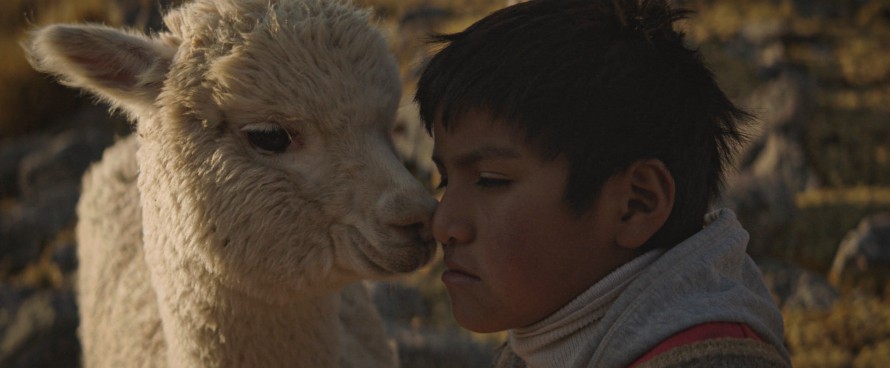
Feliciano (Alberth Merma) and his alpaca Ronaldo in Raíz | Through Rocks and Clouds by Franco García Becerra
You have written that the films in this year’s programme offer “fresh perspectives on what is and what could be.” Which new perspectives are opening up – and what is it that could be?
Sebastian: There are always films that deal more with contemporary issues and films that delve more deeply into the realms of the imagination. The cinema should be a place where an examination of the present happens without it becoming subordinated to political discourse. Cinema for younger audiences in particular must be able to remain an art form that is free from the constraints encountered elsewhere.
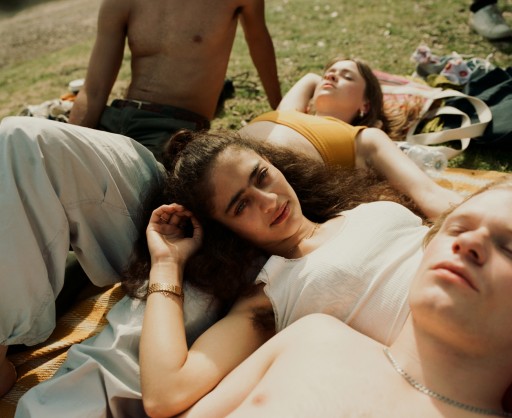
Deba Hekmat, Lydia Fleming and Solly McLeod in Last Swim by Sasha Nathwani
Melika: The films in this year’s programme clearly display a supportive view of the interpersonal, especially in the relationships between the protagonists and their friends or families. For example, Last Swim by Sasha Nathwani, which is opening our 14plus programme. I caught myself repeatedly looking for romantic relationships between the friends in this film, but they never really turn out to be that. Instead, it focuses on a strong sense of connection and closeness between the friends and depicts a world in which the girls treat each other in a warm and supportive way. The short film Sukoun by Dina Naser takes hearing viewers into the world of a girl who has a hearing impairment and makes her realm of experience tangible to us rather than the plot revolving entirely around her disability.
S: Another example of a film that opens up perspectives on what can be is the Colombian short Uli by Mariana Gil Ríos. It’s about a young girl who meets an older person by chance and, in doing so, discovers new possibilities, for example, in relation to her own gender identity. “What can be” is not necessarily an idea of the future in the temporal sense but about the possibility of seeing things differently, putting them into a different relationship to each other and opening up realms of experience.
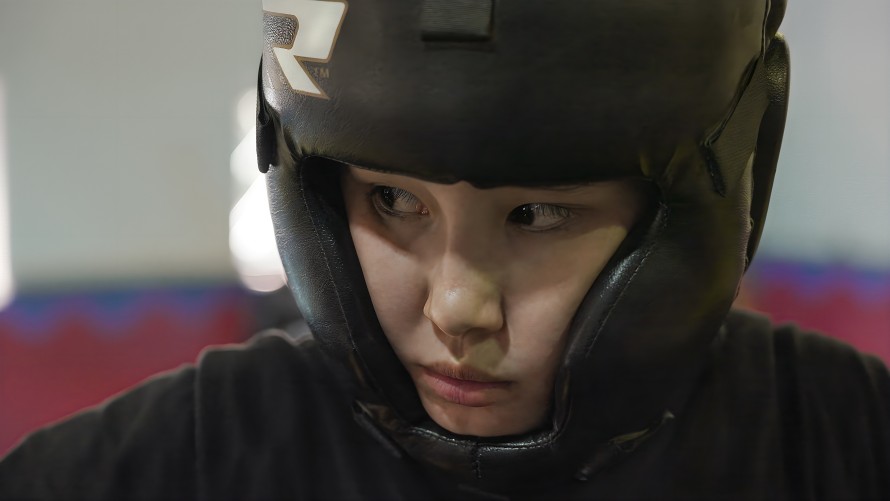
The protagonist of the documentary Maydegol by Sarvnaz Alambeigi
The documentary Maydegol by Sarvnaz Alambeigi opens up a new, almost surreal realm of experience...
S: This film has a fantastic opening sequence. The protagonist climbs onto a factory gate, insults the owner and then demands that he gives her a job. There’s something quite surreal about it. And it also captures the protagonist’s combative spirit. The director has a precise feel for the balance between intimacy and detachment. She shows us the protagonist’s family situation, which is partly defined by violence, without exploiting it.
The films in your programme often deal with very serious topics and place them into political contexts. How do they manage to present this in an age-appropriate way? Or is the term “age-appropriate” misleading?
S: We don’t rule out any topic from the outset. As long as they’re things that affect young people, we can and should discuss these things with them – also in the form of films. The more important question is: How do the films do this? From whose perspective and in what form is the story being told and what does the film offer the audience – in terms of images and stories – that enables them to further think about the topic? Raíz, for example, is the story of a boy from an Indigenous community in Peru whose world is threatened by the activities of a mining company. The boy is accompanied by an alpaca named Ronaldo. The film depicts with great warmth the boy’s courage, his inventiveness and trust in a specific worldview that comes from his community. The film is about a serious topic, but it also puts forward a hopeful point of view.
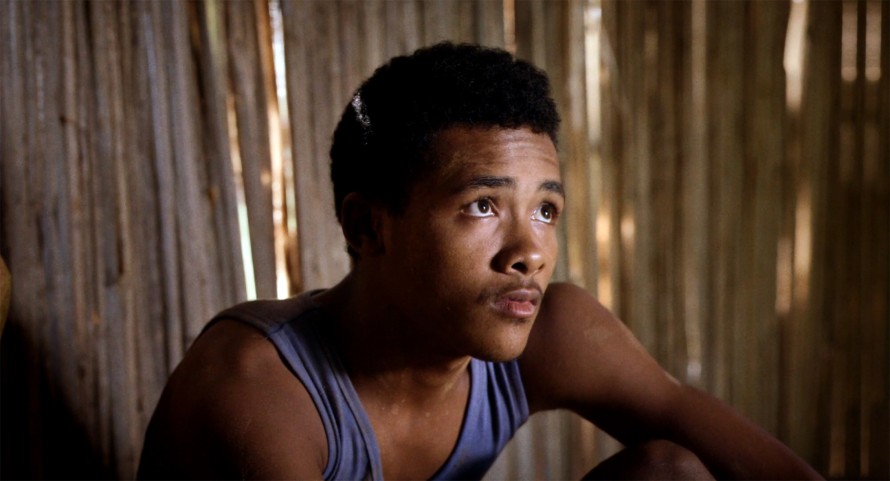
Parista Sambo in Disco Afrika : une histoire malgache by Luck Razanajaona
M: It’s important to ask ourselves what we are referring to when we talk about age-appropriate content and forms. Is it age-appropriate to withhold something from young people that concerns them or is causing them worry – like, for example, the wars that are currently being fought? Disco Afrika : une histoire malgache by Luck Razanajaona is very pertinent in this context: the film looks at Malagasy society from a perspective shaped by the protagonist’s political awakening. Little by little, Kwame approaches what has happened and is happening around him via his own family history. The film always focuses on the young man’s own position, making complexities visible without attempting to resolve them.
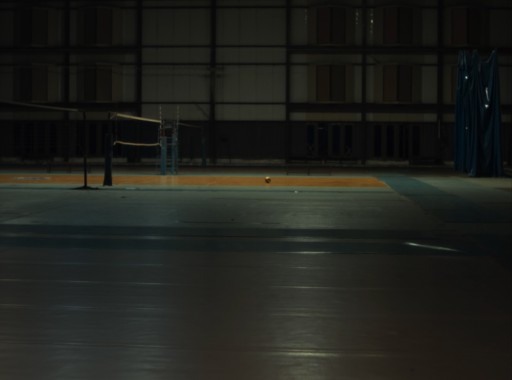
Un pájaro voló | A Bird Flew by Leinad Pájaro De la Hoz
S: The short film Un Pájaro Voló by Leinad Pájaro De Hoz tells an autobiographical story about a Cuban volleyball team where one player has died. It makes palpable how there is no room for mourning in the processes of the sport, the training and routines. However, the film’s visual and sound design creates its very own, cinematic space for grief. And the community-building viewing experience in the cinema opens up the opportunity to deal with this topic.
It seems to me that the topic of coming of age, on the other hand, is less present in the programme. Are films for young people already much more than just about coming of age?
S: In the narrower sense, coming of age is a genre in which a character is in the process of growing into or out of a certain world. They have a momentous experience that forces them to make a decision and this leads them to become the person that they actually already are. What’s particularly interesting are the stories that deviate slightly from this model – for example, in queer coming-of-age films in which certain concepts of identity are challenged. Huling Palabas is a good example of this. For the main character in this Filipino film, the question of his own identity is closely linked to the mystery of his father. When he then meets two young people in his small Filipino town, this process heads in a completely different direction, so that the question about his place in the world is suddenly no longer connected to his origins but instead to his relationships. The film also shows how cinema can give us images that can help us to rethink our own present or desired future.
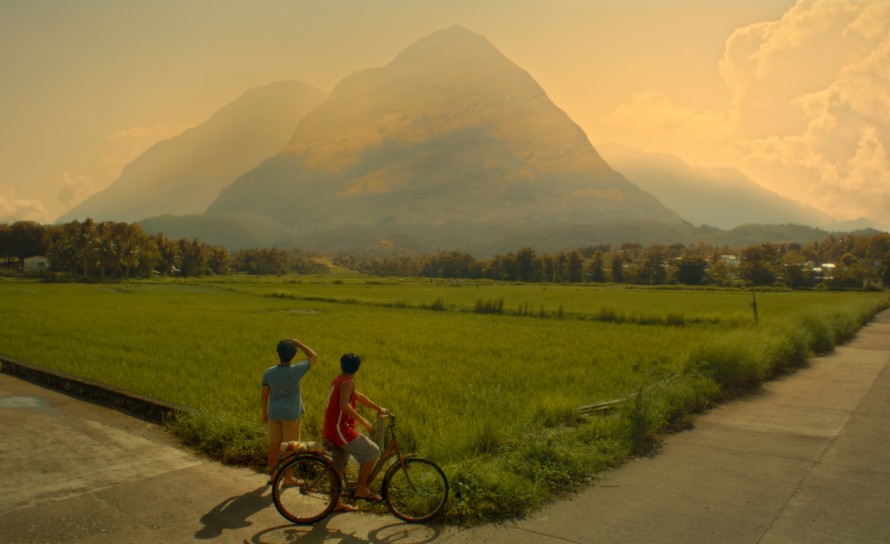
Shun Mark Gomez and Bon Andrew Lentejas in Huling Palabas by Ryan Machado
The Belgian debut film Young Hearts by Anthony Schatteman also offers great emotional cinema in the best sense of the word. It focuses on a 13-year-old whose new neighbour triggers unexpected feelings in him. The protagonist analyses the experience he is going through in order to be able to express what is suddenly happening to him, to be able to find a language for it. The director says he wanted to make the film that he would have liked to have seen in the cinema himself as a gay teenager.
M: This altered view of the world is also wonderfully portrayed in Los tonos mayores. The protagonist receives messages via an implant in her arm that she tries to decode. In doing so, she embarks on an examination of herself and her relationship with her father. There is something very emancipatory about her uniquely personal process of growing up in which she takes us on an exploration of her city.

Vladyslav Baliuk in Obraza by Gleb Osatinski; Kosar Ali in Muna by Warda Mohamed
Music seems to play an important role in the films.
S: Yes, for example, in Obraza by Gleb Osatinski. The film opens with a punk band rehearsing at school. It is set in Ukraine at the end of the Soviet era and tells the story of a Jewish family and the ostracism and anti-Semitism they experience. The energy of the music manifests something that the protagonist cannot express in any other way.
M: Muna by Warda Mohamed also tells a big part of its story via the use of music. The film is set in the family home of the protagonist, Muna. Her grandfather, whom she didn’t know very well, has died and her mother gets her – unlike her older brother – involved in the preparation of the mourning rituals, for example, in cooking for and entertaining the family. At the same time, Muna is busy creating a playlist with her friends that is packed full of pop music. We see the world of her friends, where she behaves differently from at home, just through the conversations about this playlist. A lovely twist in the story is that Muna ultimately also gets to experience this feeling of connection through her grandfather’s music. I find the communication between older and younger people, as happens in Muna via the music, very inspiring in this year’s programme. The same thing can be observed in It’s Okay! by Kim Hye-young. At the end of this film, traditional Korean dance music and pop songs combine to create a moment of commonality between the school principal and the protagonist.
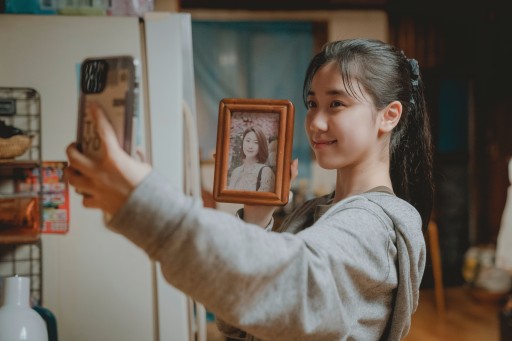
Lee Re in It’s Okay! by Kim Hye-young
It's Okay! is characterised above all by the protagonist’s sense of humour. Which other light-hearted films do you have in this year’s programme?
M: Heavy and light topics are often not very far apart. Despite its seriousness, Last Swim has many moments that create an incredibly good feeling. And a very obvious example is Fox and Hare Save the Forest – a film which will hopefully bring great lightness and laughter to everyone.
S: I would also say that they aren’t two polar opposites: the problem films and the entertainment films. There are a few films in 14plus that, although they deal with relatively serious topics, still have a strong sense of humour. For example, The Great Phuket, which is set in a southern Chinese city filled with a great energy of change. The story is about a young protagonist who accidentally discovers a kind of cave tunnel that becomes a space for his imagination. His inner experiences are presented in animated sequences, creating a fantastic montage effect. But the film also has funny moments. Humour can be one way of detaching yourself from something that is worrying you. In this way, humour can be an empowering element.
M: Another film I’d like to mention is the short Aguacurario. Two young people meet by chance, have a wonderful exchange of blows and then spend the entire day together without having known each other beforehand. It’s a lot of fun to watch them sparring with each other.
S: I’m also very much looking forward to experiencing Beurk ! in the cinema. It’s a short film in the Kplus programme with a recommended age of eight and above but it addresses something very universal. It’s an animation set in a summer campsite that shows a group of kids watching adults kissing each other, which all the kids find completely gross, hence the title of Yuck! – but then there is also something beyond disgust: a fascination. The film has a very keen eye for the emotional worlds of children and their way of dealing with semi-public displays of affection...
M: ...and for the absurdities of camping and summer holidays in general, as the T-shirt-shaped sunburn shows – that alone is such a wonderful detail that makes it fun to watch.
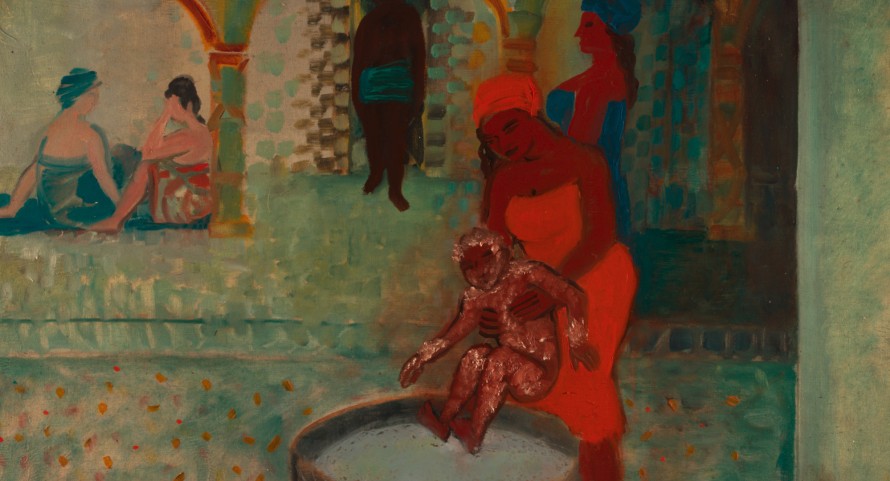
Papillon by Florence Miailhe
Let’s stay with the animations for a moment. Which ones particularly stand out on a visual level?
S: Papillon by Florence Miailhe is incredibly rich. The film tells the biographical story of a Jewish swimmer who grows up in North Africa and has a very eventful life. He is affected by the violence of the Nazis and survives a concentration camp. At the same time, there is something incredibly positive about the character’s self-affirmation. Using oil painting – on both glass and canvas – the film repeatedly creates transitional spaces that take recourse both to memories and something otherworldly, but at the same time also refer to a form of introspection.
The Girl Who Lived in the Loo, an Indian film directed by Susana Dash, also succeeds, in an extremely original manner both in terms of visuals and narrative, in telling a story from the perspective of a young woman who, as she grows up and struggles with her self-image and doubts, discovers that the bathroom can be her place of refuge. The film uses a form of lightly drawn sketches to create some great spaces that tell us a lot about this protagonist’s perception of the world.
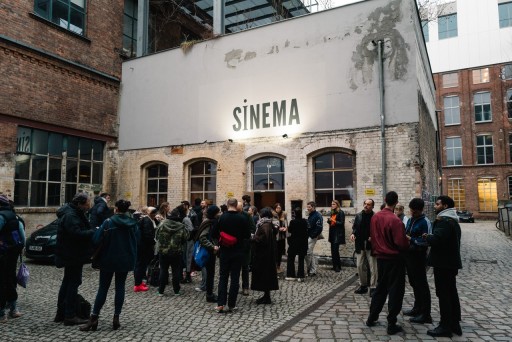
Sinema Transtopia in the Wedding district in the north of Berlin
There seems to be a mini-focus on Wedding in the programme: the two transnational German films, Sieger sein and Ellbogen, are both set in the Wedding district of Berlin and you are also holding a presentation of the programme at Sinema Transtopia. How did this cooperation and the new format come about?
M: When we took over, our goal was to come into closer contact with the individuals and initiatives that come to the Generation section every year. We attract huge audiences and a great deal of attention during the festival but that’s over a very limited timeframe. So we also want to think more about how we can reach the target groups for whom coming to the Berlinale is not such an obvious thing to do and to engage in a deeper dialogue with them. The programme presentation is a new format that we’d like to establish in addition to our early publication of the Generation programme so we can present our film selection and engage with the audience outside of the festival. Sinema Transtopia was the first location we both thought of because it’s important to us to continually create connections with people and organisations in the city who are involved in film education all year round. In this context, we have also slightly redesigned our Berlinale school project so that the internal final presentations – which is an important event for the participating school classes – can be presented in a Berlin arthouse cinema that is also involved in film education. In this way, we want to create cross-connections and show young audiences that they can actively shape such locations.
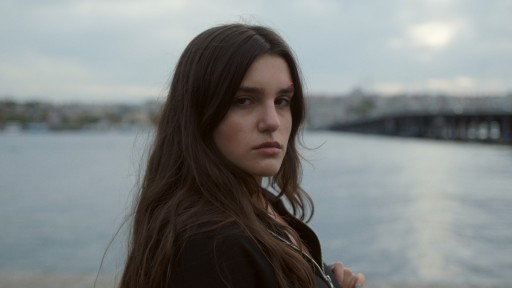
Melia Kara in Ellbogen | Elbow by Aslı Özarslan
S: Sinema Transtopia is also very special because, in a short amount of time, it has managed to become an important place for film culture in Berlin – not just a post-migrant one – and it has very strong links to the community. However, the overlap in Wedding arose by chance. Sieger sein and Ellbogen are related to each other because they both focus on protagonists who are socially marginalised and tell stories that aren’t easily confined to national borders but instead reflect the problem with national borders. We’ve noticed that Ellbogen is one of the most highly anticipated films in the programme. It finds its own way to tell the central story – the specific subjectivity of the protagonist, the pressure she’s under, her experiences of being marginalised and the anger she feels – in a completely different form. The film has a great way of handing over the screen to a complex protagonist who is allowed to exist in all her complexities and retains her ambivalences to the end.
M: I’m trying to refrain from comparing the book with the film. But in the case of this film, I find it intriguing to think about the images I created in my mind’s eye while reading the book from the perspective of a non-marginalised person, how they are realised in the film and how the work holds up a mirror to myself.
Which perspectives do you have, for example, in the selection committee?
S: We’ve changed a few things in the selection process this year, also to act on our experiences from last year. In 2023, we had an animated film in the programme that people told us was reproducing racist stereotypes in a form of blackfacing. Unfortunately, we failed to recognise that during the selection process. We’d like to apologise for the fact that something in our programme had a discriminatory or hurtful effect. We’re still in the process of coming to terms with what happened. One of the consequences is that we’ve invited new people onto our selection committees who, alongside their curatorial experience, bring anti-discrimination expertise and non-white perspectives. We’ve also tried to make the selection process more based on a collective discussion to ensure that the films are seen from a variety of different perspectives.
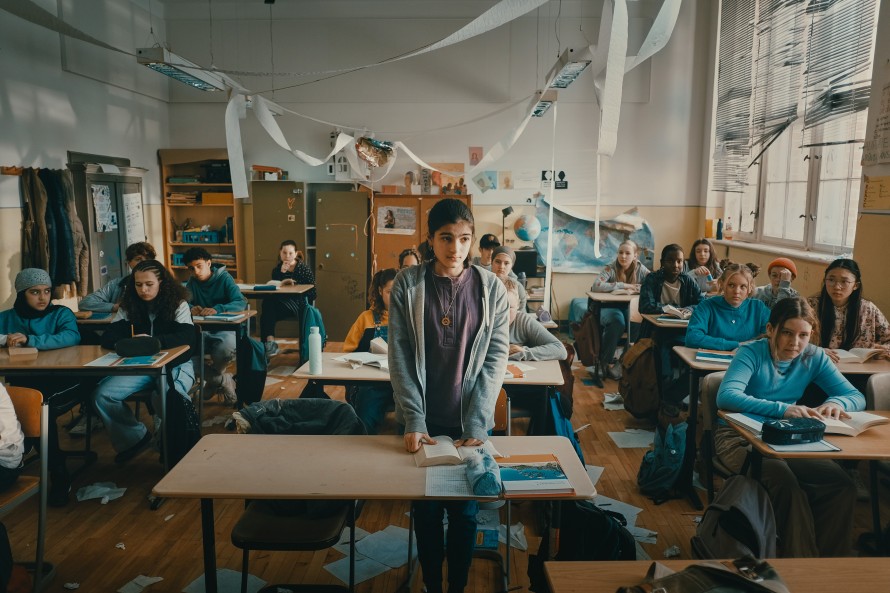
Sieger sein | Winners by Soleen Yusef
Last but not least: How do you do the translations? Will there be live voice-overs again? What new plans do you have?
M: Traditionally, we show the majority of the films in the Kplus programme in their original language with live German voice-over. The film Young Hearts will be shown in the original language with German and English subtitles. The two short film programmes will also come with a complete live German voice-over. In 14plus, we show all the films in their original language with English subtitles. This year, we will also be showing some films with German subtitles. This is something we consciously set out to do to break down barriers in this area. In addition, Sieger sein will have a screening with a live Syrian Arabic voice-over and Raíz will have a live Ukrainian voice-over in order to specifically serve those communities.
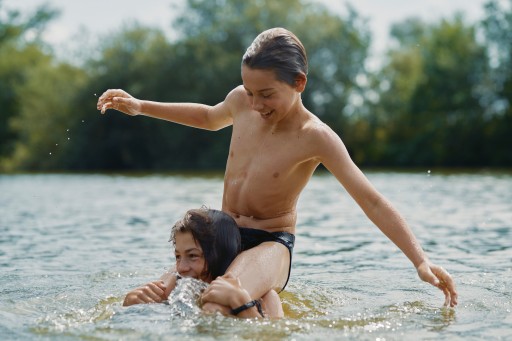
Marius De Saeger and Lou Goossens in Young Hearts by Anthony Schatteman,
S: We’ve found that, for a significant part of the 14plus audience, English is not the second, but the third or fourth language and that barriers can be lowered if we provide additional German subtitles. That’s why we’re trying to strengthen this area. This year, we’re also planning to have a complete short film programme from Kplus interpreted live into German sign language.